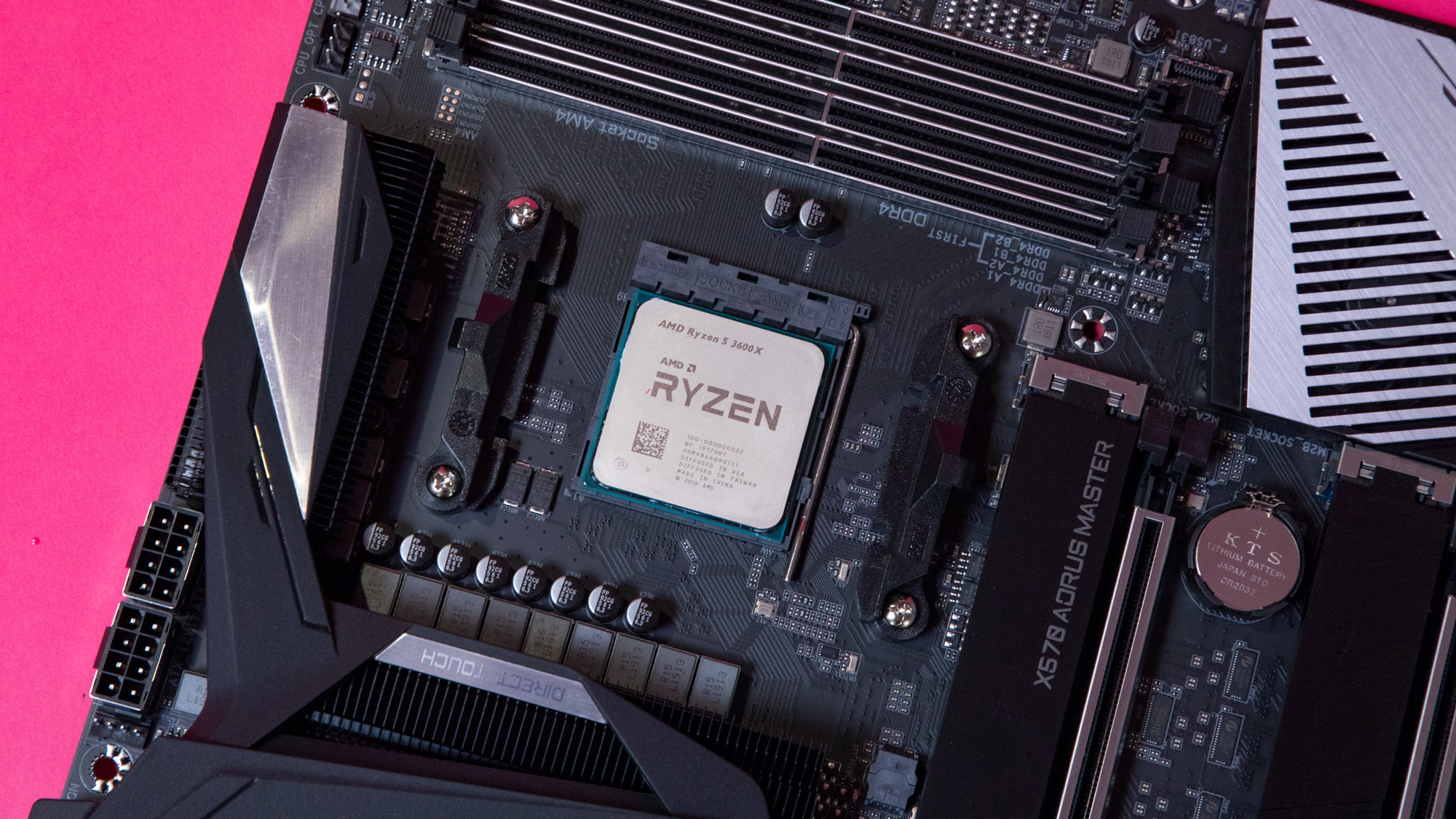Table of Contents
AMD has been killing it this year – pretty much any casual observer can pick that up. Whether its with the AMD Ryzen 7 3700X selling more than Intel’s entire lineup, or with the Ryzen 9 3900X outperforming any other processor in its territory, Team Red has pulled ahead. However, it’s not hard to look back four or five years ago to see AMD processors sitting at the bottom of the pile.
So, what changed? Did AMD just start offering better processors? Or was it a perfect storm of Intel’s complacency and a manufacturing breakthrough for AMD? At the end of the day, it’s essentially a mix of the two – a perfect storm of great PC hardware from AMD and a slowing of meaningful innovation from Intel.

Where did it all begin?
Back in 2017, Intel was at the top of the market. Riding high from the Intel Core i7-7700K and other Kaby Lake processors, it wasn’t prepared for AMD Ryzen. When the first generation of Ryzen hit the streets in March 2017, it offered some incredible performance, especially compared to 7th-generation Kaby Lake processors.
For instance, the AMD Ryzen 7 1800X was able to score 1,612 in Cinebench R15, compared to the Intel Core i7-7700K’s 970. That’s a 40% boost in multi-threaded workloads. However, Intel was still able to keep the upper hand in single-core performance, scoring 194 in the single-threaded Cinebench test, where the Ryzen 7 1800X scored 159.
However, later, Intel launched Coffee Lake, which ended up beating the first generation of Ryzen chips in multi-threaded workloads – until AMD released the second generation of Ryzen.
Looking back, this kind of started a pattern, where AMD processors would come out, wipe the floor with the current-generation Intel processors in multi-core workloads, then Intel would release another refinement of Skylake, and then the process would repeat.
This becomes even more impactful if you look a bit longer into the past. Before AMD Ryzen, Team Red’s processors were based on the Bulldozer architecture, and it wasn’t very successful. For instance, the AMD FX 8350 was an 8-core processor that launched way back in 2012. However, compared to its rival Intel chip at the time, the Intel Core i7-3770K – a processor with half the physical cores – it faltered. In the then-current Cinebench R11.5 test, the AMD FX 8350 scored 6.71, compared to the 7.14 scored by the i7-3770K.
Before Ryzen, AMD was struggling to even keep up with Intel, which led to a stagnant processor market. So, when the first generation of Ryzen came out, it brought competition to a market that hadn’t seen it for years. AMD Ryzen, then, reinvigorated the CPU market.

A ‘spectre’ is haunting the CPU market
Anyone who has been following the processor scene for the last few years knew this was coming. We have to talk about Spectre and Meltdown. Back in January 2018, two critical CPU security flaws opened up: Spectre and Meltdown. The first affected all kinds of processors, from Intel to AMD – even ARM processors were affected.
However, Intel faced a majority of the backlash over this, as the Meltdown exploit only affected its processors.
These were potentially catastrophic security failures, where attackers could execute some relatively simple code to get access to anything from passwords to photos you’ve since deleted. There is more information here, but essentially these attacks take advantage of speculative execution, where a processor essentially guesses its next project, and then dumps any wrong data into the cache.
Spectre and Meltdown were essentially able to read this information without creating a log of it, which both undermined security, and made it hard to detect whether or not you were affected in the first place. Fixes did come out – so Intel processors aren’t affected anymore, but there was a performance impact: as much as 30% in certain workloads.
Because AMD was able to avoid a lot of the blame for these security exploits, especially when they were all over the news, it was able to take advantage of the perception that AMD processors were a more secure option – though they were still vulnerable to Spectre attacks.
And, now that there is a new security flaw hitting Intel processors this week, it looks like this security battle will continue in earnest.

All about that value
In 2018, AMD launched its second generation of Ryzen processors, heralded by the Ryzen 7 2700X in the mainstream space and the Threadripper 2990WX in the HEDT (high-end desktop) market. These processors took the computing world by storm upon their release, beating the Intel Core i7-8700K and the i9-7980XE, respectively.
What’s more impressive is that the AMD Ryzen 7 2700X, in our testing at least, got a higher single-core score than the 8700K, while simultaneously wiping the floor with it in multi-threaded workloads.
Intel did eventually launch a processor that beat the Ryzen 7 2700X in the Intel Core i9-9900K, but at $479 (£469, AU$765) – much more expensive than the $329 (£299, AU$469) AMD processor. In our testing, the Intel Core i9-9900K was 22% faster in GeekBench, and only 3% faster in Cinebench, while costing a whopping 32% more. So, Intel’s chip was absolutely faster, but it was more expensive and came nearly six months later.
Over the last few years AMD has consistently provided an excellent level of performance, while keeping prices accessible – something its continuing with the AMD Radeon RX 5700 XT, with which it tricked Nvidia into releasing more expensive graphics cards.
What about the graphics?
You can’t forget that AMD makes graphics cards, too, even if it hasn’t made as many headlines for graphics as it has for processors. Unfortunately, AMD hasn’t been able to claw its way back into parity with Nvidia in the same way it has with Intel.
In fact, it hasn’t been since the AMD Radeon R9 290 and the R9 290X all the way back in 2013 that AMD has been able to properly trade blows with Nvidia’s flagship. That’s practically ancient history when it comes to PC components.
And, ever since then, there’s been this separation in the GPU market, where AMD would make a bunch of budget graphics cards, leaving Nvidia to dominate on the high-end with GPUs like the RTX 2080 Ti. AMD did get close with the AMD Radeon RX Vega 64, but it couldn’t compete with the GTX 1080 Ti, instead clashing with the GTX 1080.
Things have changed a little bit now that the AMD Radeon RX 5700 XT and RX 5700 have hit the streets, as those cards provide better performance for the money than the Nvidia GeForce RTX 2060 Super and RTX 2060 that they go up against.
However, the AMD Radeon VII, when it launched shortly after CES 2019, failed to dethrone the RTX 2080, let alone the RTX 2080 Ti, leaving Nvidia to dominate the high-end yet again. Still, we have seen some signs that AMD will be getting ready to compete on the high-end – but it doesn’t look like it will happen before 2020.

The future is in the future
Right now, the AMD Ryzen 9 3900X is riding high – not only is it our Best In Class processor, but it’s sold out pretty much everywhere. Right now, Intel’s nearest competitor is the Intel Core i9-9920X, which more than double the price. So, where do we go from here?
Well, AMD will be releasing an even more powerful processor in September in the Ryzen 9 3950X, which will likely widen that performance delta even more. There are some rumors that suggest a 10-core Intel Comet Lake chip might end up dethroning the 3900X. However, that’s simply a possibility.
With its Ryzen 3000 processors, AMD was able to boost IPC (Instructions per clock) performance by a whopping 15%, bringing single-core performance within reaching distance of Intel. If AMD is able to continue making progress, while Intel stays stuck on a 14nm manufacturing process, we could see Team Red taking the lead for good in the CPU market.
AMD has come an extremely long way in the last few years when it comes to its processors, and it doesn’t look like the manufacturer plans on slowing down anytime soon.
We’ve even started to see signs that it’s going to attack the graphics card market in much the same way as it did the CPU market with its Navi graphics cards. TechRadar will continue to track AMD’s progress in 2020 and beyond to see where the chips fall.



